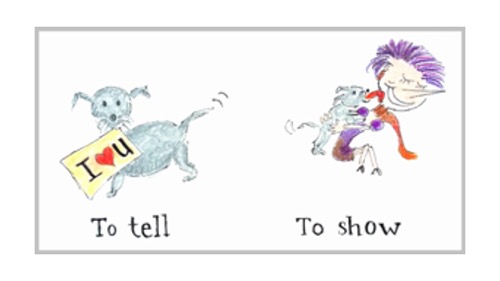Unit 1: Telling Stories: From the Analogue to the Digital
This unit was authored by Susan Schreibman and Marianne Ping Huang with the assistance of Esther Kamara and Stephanie Ochiel.
 |
|
An example of Show, Don't Tell. Image source: Enchanting Marketing. Click image to enlarge. |
1.1.1 Narrative and Storytelling
1.1.2 Narrative Theory: The Beginnings & Relevance Today
1.1.3 Case Study: DH Origin Stories
1.1.4 Technology and Narrative
1.1.5 Case Study: Rhyzomic Narrative
1.1.6 Digital Storytelling
1.1.7 Storytelling as Meaning Making in Multiple Perspectives
1.1.8 Case Study: Maps of our Worlds
1.1.9 The Medium and the Message
1.1.10 Memory, Archives, and Storytelling in the Digital
1.1.11 Case study: Archives that Matter
1.1.12 Case study: Digital Orality

